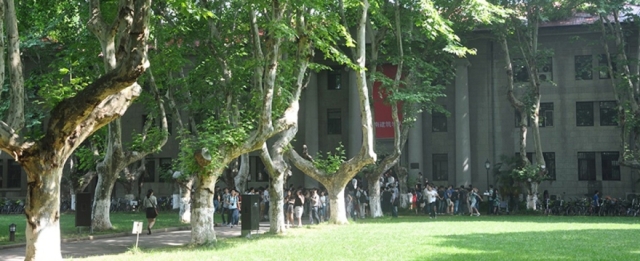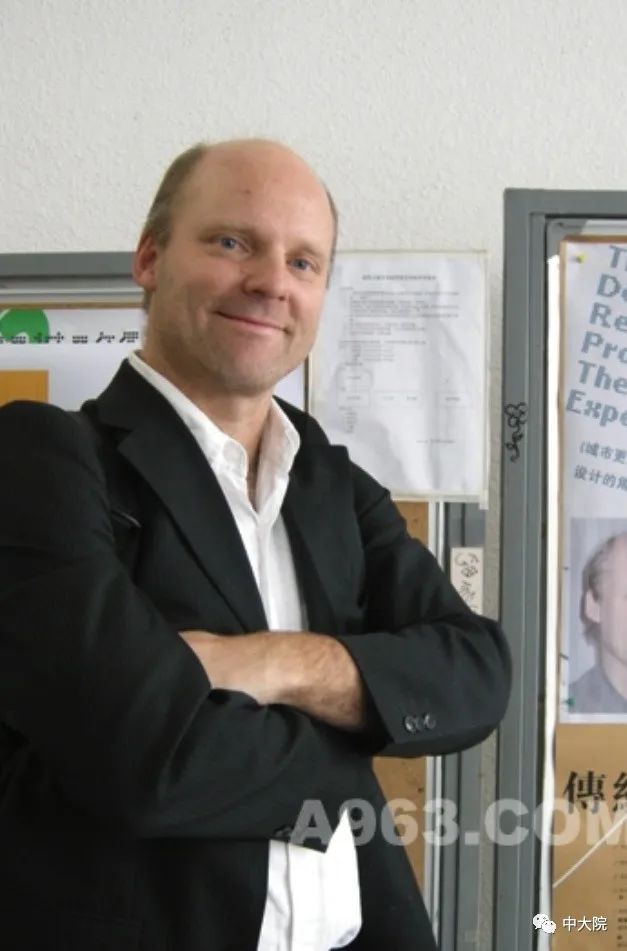
国际在线教学季 Advanced Lecture Series丨城市设计预告

2020国际在线教学季
前沿学术讲座系列
城市设计
Urban Design
主持人
乔纳森·巴奈特 Prof. Jonathan Barnett
日程
1. 城市设计的虚拟旅行 I
07/01 (周三)20:00 乔纳森·巴奈特
2. 柏林城市更新50年
07/09 (周四)14:30 魏尔·阿尔陶克
3. 德国工业废弃地的更新
07/14 (周二)14:30 魏尔·阿尔陶克
4. 城市设计的虚拟旅行 II
07/15 (周三)20:00 乔纳森·巴奈特
5. 城市设计之窗
07/17 (周五)14:30 卡尔•费舍尔
6. 向欧洲学习
07/21(周二)14:30 卡尔•费舍尔
7. 临时用途和自建城市
07/24 (周五)15:00 魏尔·阿尔陶克
8. 聚焦德国的规划文化、遗产保护和新城区规划的方法
07/28 (周二)14:30 卡尔•费舍尔
1. Virtual Urban Design Tour 1
07/01 (Wednesday) 20:00 Prof. Jonathan Barnett
2. 50 years of urban regeneration in Berlin
07/09 (Thursday) 14:30 Prof. Dr. Uwe Altrock
3. The regeneration of brownfield sites in Germany
07/14 (Tuesday) 14:30 Prof. Dr. Uwe Altrock
4. Virtual Urban Design Tour 2
07/15 (Wednesday) 20:00 Prof. Jonathan Barnett
5. Windows Upon Urban Design
07/17 (Friday) 14:30 Prof. Dr. Karl Friedheim Fischer
6. Learning from Europe
07/21(Tuesday) 14:30 Prof. Dr. Karl Friedheim Fischer
7. Temporary uses and the self-made city
07/24( Friday) 15:00 Prof. Dr. Uwe Altrock
8. Spotlights on German approaches to Planning Culture, Heritage & Conservation and New Urban Districts
07/28 (Tuesday) 14:30 Prof. Dr. Karl Friedheim Fischer
演讲嘉宾 Lecturers

乔纳森·巴奈特
Prof. Jonathan Barnett
乔纳森·巴奈特是世界著名的城市设计专家,宾夕法尼亚大学教授、前纽约规划协会主席、纽约注册建筑师;美国建筑师学会会员;美国注册规划师学会会员。他出版了许多有关城市设计的书籍、书籍章节和论文。在他的著作《城市设计:现代主义、传统、绿色和系统的视角》中,巴奈特探讨了四种最重要的城市设计方法的历史和当前实践,并提出了借鉴这四种方法的第五种方法。
魏尔•阿尔陶克
Prof. Dr. Uwe Altrock
魏尔•阿尔陶克是德国卡塞尔大学教授,建筑、城市与景观规划学院院长,城市更新和规划教研室负责人、城市规划师。他同时是《德国城市更新年鉴系列》、新欧盟成员国的空间规划和城市发展 (Ashgate 2006)》与《巨型城市群的成熟:珠三角地区的渐进性转型 (Springer 2014)》的共同主编。他的研究领域包括城市治理、 巨型城市、 城市更新与规划,规划理论和历史等。

卡尔•费舍尔
Prof. Dr. Karl Friedheim Fischer
卡尔•费舍尔是德国卡塞尔大学的荣退教授,目前担任澳大利亚新南威尔士大学建成环境学院的客座教授,自2013年以来担任城市发展和城市设计课程硕士的负责人。他的研究领域集中在城市设计与城市发展,规划史和城市更新的国际比较(德国/澳大利亚/英国/美国/法国)。他曾在亚琛、伯克利、堪培拉、汉堡和卡塞尔等地教授城市设计、城市规划和规划史。
讲座介绍 Lecture Introduction
讲座1:城市设计的虚拟旅行 I
讲座4:城市设计的虚拟旅行 II
讲座将引领学生参观一些成功实施城市设计项目的场所,实现所谓的虚拟城市设计之旅。在讲座中访问三个虚拟场所。教授将使用照片来描述每个地方,尤其是来自Google Globe和Google Street View的照片,以及其他背景信息,例如场地规划和“之前”的照片,并介绍多个利益相关者共同参与的情况。访问每个场所大约需要15-20分钟时间。教授还会与学生交流,分析从每次访问中汲取了哪些关键经验,并可以用到自己的工作中。经过十分钟的讨论,再继续访问下一个场所。
Concerning virtual lectures on urban design: as travel will be difficult until a vaccine is available for Covid19, my suggestion is that I use my virtual lectures to take your students on virtual urban design tours of some of the places where urban design has been implemented successfully. I think we could make three virtual visits during each lecture. I would describe each place using photos, especially from Google Globe and Google Street View, but with other background information like site plans and “before” photos. Each visit would take about 15 – 20 minutes. I would ask the students what are the most important lessons they can take away from each tour to use in their own work. I will suggest a few lessons if the students don’t see them right away. Then after, let us say, ten minutes of discussion, we would move on to the next visit.
1)布宜诺斯艾利斯,波多黎各马德罗
2)汉堡,港口新城
3)纽约,林肯广场特别区。林肯广场对于中国城市设计法律也有重要参考意义,因为这是对现有城市复杂部分的干预,并已分阶段实施。
1)Puerto Madero, Buenos Aires
2)HafenCity, Hamburg
3)Lincoln Square Special Zoning District, NYC
讲座2:柏林城市更新50年
讲座展示了柏林城市更新的悠久传统,介绍了人们如何从战后现代主义鼎盛时期的城市改造和大拆大建,如果逐步采取更为谨慎的方法。柏林在城市设计和城市更新方面取得了重大成就,体现了德国在城市再开发体制方面的成就,包括社会融合城市、历史街区保护以及对战后郊区大型居住区的更新改造。
The talk shows how the long tradition of urban regeneration has changed from renewal and demolition in the heyday of post-war modernism to more careful approaches. It presents major achievements in terms of urban design and regeneration that characterize the German system of urban redevelopment grants such as socially integrative cities, the preservation of historic quarters and the restructuring of the building stock of post-war large housing estates in the suburban periphery.
讲座3:德国工业废弃地的更新
讲座总结了德国的各种工业废弃地的更新策略。自20世纪末以来,这些策略被应用于以前的军事用地、工业生产基地和基础设施等用地,这些地区原有的工业废弃地丧失了原有功能,并经历了深刻的结构性转型。讲座探讨了新的开发如何利用以前城市建设的遗产,以及如何引导它们进行调整,以满足城市社会不断变化的新需求。
The talk presents a variety of strategies that have been applied to different types of brownfields that have lost their original functions due to structural changes having taken place since the late 20th century on former military barracks, manufacturing sites and infrastructure facilities. It explores how new developments make use of the physical relics of a former period of urban development and how they contribute to satisfying the changing new needs of urban societies.
讲座5:城市设计之窗
第一次讲座来自于《规划史之窗》和个人在新南威尔士大学教授的城市发展与设计课程。它使用“窗口”的隐喻作为组织原则和启发式工具,以跨学科的视角审视不同的城市现实问题和城市设计方法。
从历史的角度来看,讲座介绍了城市设计是如何出现的。作为建筑与规划之间的桥梁,城市设计衔接了至少三个欧洲传统,包括英国的城市规划、地中海国家中的城市建筑(Urbanismo)以及德国的城市设计(Städtebau)。城市设计同时还涉及到社会科学、经济学等领域,对遗产保护和可持续性发展的认识也在不断提高。
讲座强调整合各个学科的不同窗口,并将其发展成为一种综合方式或至少以合作的方式联合起来,以实现良好的城市价值。在从国际角度对城市设计方法进行了调查之后,报告还将考察新南威尔士大学城市发展与设计硕士课程背后的一系列原则,其中包括将城市设计作为公共政策。这种作为最早是由乔纳森•巴奈特(Jonathan Barnett)针对美国的情况提出的,后来在澳大利亚的规划法中也得到了广泛呼应,不过对欧洲的影响则较为有限。这种观察也将我们带入了知识转移和向其他国家经验学习这一主题。
The first lecture derives its perspectives from the book “Windows Upon Planning History” and from the principles of the Masters’ Course of Urban Development & Design taught at the University of New South Wales, Sydney. It employs the metaphor of “windows” as an organizing principle and a heuristic device to look at different perceptions of urban realities and approaches to urban design in an interdisciplinary perspective.
In a historical view, the lecture demonstrates how urban design emerged, as it were, as a bridge between architecture and planning, between British approaches to Town Planning, the Urbanismo practiced in the Mediterranean countries and the German practice of Städtebau, while drawing on a growing range of fields including the social sciences, economics etc. and a developing awareness of perspectives concerning heritage and sustainability.
The lecture emphasizes the value of integrating the views from the different windows opened by the individual disciplines into a synthesis or at least a co-operative joint approach in the interest of good city making. Following a survey of approaches to urban design from an international perspective, it looks at a set of principles behind the Masters’ Course of Urban Development & Design at the University of New South Wales including urban design as public policy. This concept as developed by Jonathan Barnett is a response to planning law created in the US and highly relevant in Australia, too, but less so in a European context. This observation leads us on to the themes of knowledge transfer and of learning from other countries.
讲座6:向欧洲学习
从2011年开始,“从欧洲学习”讲座定期在新南威尔士大学举行,每年会得到更新,各个讲座概述了自1960年代以来欧洲城市设计领域的主要发展情况,包括范式变化和案例研究。结合澳大利亚的实际情况,讲座还讨论了各种类型的学习过程,既包括表面化的模仿,也涉及到对于基础结构要素的深度思考。
The lecture“Learning from Europe" presented as the Paul Reid Lecture at UNSW in 2011 and updated annually provides an overview across major developments, paradigm changes and case studies in the European urban design scene since the 1960s and throws up questions of learning processes between superficial copying and approaches based on in-depth consideration of basic structural issues, here on the example of Australia.
讲座7:临时用途和自建城市
讲座的重点是通过临时性的功能和干预,帮助空置的建筑物和场所逐步进行更新。它介绍了主要战略,并提供了来自德国和欧洲的一系列案例。这些案例展示了各种可能的开发方法如何帮助克服停滞时期,增强当地特色并促进人们重新关注被忽视的地区。
The talk focuses on the development and practice of incrementalregeneration of vacant buildings and sites with the help of temporary uses and interventions.It introduces major strategies and presents examples from Germany and Europethat show how alternative development approaches can help overcome periods ofstagnation, strengthen the local identity and contribute to a renewed belief inneglected areas.
讲座8:聚焦德国的规划文化、遗产保护和新城区规划的方法
讲座介绍了德国在城市设计和城市发展过程中的一些经验。它着眼于规划文化方面的认识,遗产管理的经验与案例研究,例如弗莱堡、蒂宾根、卡塞尔和汉堡的港口新城等。
A third lecture presents a selection of German approaches to urban design and urban development processes. It looks at perspectives of Planning Culture, developments in the field of Heritage and at case studies such as the "New Urban Districts" between Freiburg, Tübingen, Kassel and Hamburg‘s HafenCity.



